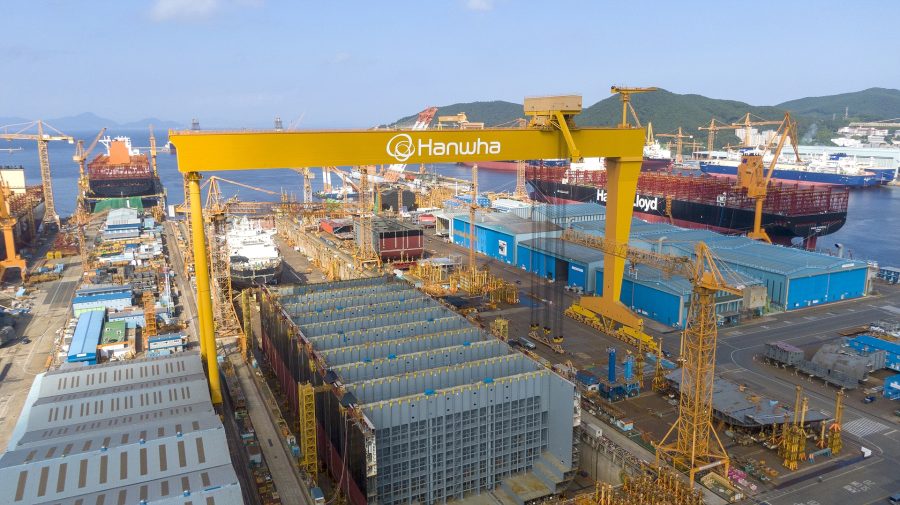South Korean company develops new ESS technology for large ocean-going vessels
The most recent acquisition by South Korea-based technology and engineering conglomerate Hanwha Group has had a rocky start. Formerly known as Daewoo Shipbuilding and Marine Engineering (DSME), the newly rebranded Hanwha Ocean posted losses of 159.1 billion won (US$120 million) in Q2 2023.
However, the company now seems to have turned a new leaf after its full incorporation into the Hanwha brand in May this year. Since then, the research and development team has got to work on several different projects, both for the commercial and defence sectors. The latter of which Hanwha has previously specialised in.
The latest product announcement is a new series of energy storage systems (ESS) that can be used for large vessels, in particular LNG carriers. The systems allow for energy generated by a power source to be stored for later use. Combined with renewable energy sources onboard a maritime vessel they can form a hybrid system to allow for the optimisation of the vessel’s power supply, thus reducing emissions and increasing fuel efficiency.
“The successful completion of this project is the result of synergy resulting from the industry-leading expertise and experience of both companies,” according to the head of Hanwha Ocean R&D Institute, Joong Kyoo Kang. “With this success, we will continue to deliver advanced eco-friendly and digital solutions to shipowners with our cutting-edge technologies.”
Hanwha Ocean has previously developed ESS for submarines and smaller vessels, such as workboats, but with this current venture is branching out into large ships. The technology developed by the company is a megawatt-hour class energy storage system that can be adequately integrated into the power supply of vessels such as LNG carriers or container ships.
As it is a joint venture between Hanwha Ocean and the already well-established Hanwha Aerospace, the latter will also take steps to develop the technology for use in the urban aerospace mobility (UAM) sector. The ESS uses lithium-ion batteries and features containerised packaging that consolidates the system. As a result, this reduces the amount of space the system takes up. It is also fitted with an automatic fire extinguishing function which allows for swift detection and fire suppression, increasing overall safety.
“The packaging and safety technology of ESS, which is essential for global decarbonisation, is critical not only in the defence sector but also in the aviation and maritime industries,” says Seung Hak Moon, head of E-Propulsion Business Group at Hanwha Aerospace. “We’re taking a holistic approach to maximise synergy through collaboration among affiliates, consistently placing the environment at the focus of all our activities.”
Hanwha Ocean also recently partnered with French class society Bureau Veritas in a joint development project (JDP) to assess the construction of independent LNG fuel tanks for ultra-large container ships. The project aims to enhance the design process of independent LNG fuel tanks by looking at how they are attached to the internal structure of a vessel.
In its previous iteration as DSME, the company had specialised in the production of LNG vessels. It delivered the world’s first and only LNG regasification vessel that supplied natural gas to disaster areas in the aftermath of Hurricane Katrina in the US in 2005. Among other accomplishments, the company has also produced 15 LNG icebreaker carriers for use in Arctic operations and, in 2020, delivered HMM Algeciras, at the time the world’s largest 23,000TEU container ship.
Additionally, the Hanwha Ocean has been granted approval in principle for cargo hold designs for ultra-large liquefied carbon dioxide (LCO2) carriers and an ammonia-fuelled gas turbine LNG carrier design from DNV and ABS, respectively.
It seems that Hanwha Ocean is now on its way to becoming a major player in the South Korean naval architecture field. The company plans to invest approximately 600 billion won (US$450 million) to develop an eco-friendly propulsion system based on ammonia, methanol and hydrogen, as well as smart ship technology and autonomous vessels.




